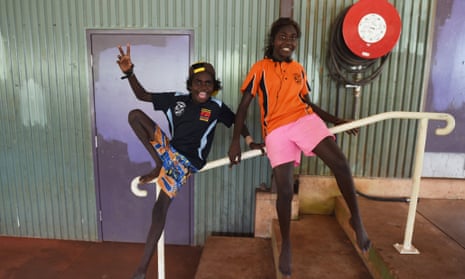One of my teachers at law school, Prof Martin Krygier, wrote something that has always stayed with me: “there are two very different kinds of questions constantly lurking behind debates over the worth of societies and institutions. Crudely put, one question is whether these societies and institutions could be worse; the other, whether they could be better”.
It has struck me since that I am an optimist, as I continual to think that our institutions could be better. Perhaps this is why I have always been strongly in favour of constitutional recognition of Indigenous Australians.
There are the symbolic reasons for the change. The exclusion of Aboriginal and Torres Strait Islander people from the document when it was first drafted meant that a critical moment of nation building excluded the first peoples of this country. There should be some recognition that this was wrong and it should be corrected.
Then there are the practical reasons. The assumptions that whites were racially superior permeated thinking by the elite at the time the constitution was drafted. This thinking is evident in parts of the document even today, notably in section 25, which permits states to make laws the prevent people of certain races from voting in elections. It isn’t used – and it is unthinkable that it would be – but it is a reminder of bigotry that we would no longer tolerate.
Then there is the notion that the arm of government that is best able to decide which rights to protect, and how to protect them, is the parliament. While for the most part this may have worked well, especially to protect the majority of Australians, can the same be said for its track record on the rights of Indigenous people, the most disadvantaged and marginalised sector of our community?
One way parliament’s performance can be judged is against protections for racial discrimination. In particular, the protections afforded under the Racial Discrimination Act.
Those protections have only been suspended three times in the Act’s history: in relation to the Hindmarsh Island bridge dispute, where the rights of Aboriginal people under heritage protection laws were suspended so that they couldn’t challenge proposed developments over their traditional land; in relation to native title legislation, that extinguished the rights of traditional owners without compensation; and in relation to aspects of the Northern Territory Intervention.
Now remember, suspending the Racial Discrimination Act doesn’t just suspend the principle of non-discrimination from applying. It also suspends the mechanisms for review and complaint, should the impact of the laws be unfair or yield contrary results.
In other words, it takes away a very important check on the exercise of executive power that assists in ensuring due process before the law and equality before the law.
These three instances were all arguably times when the creation of laws and policies would have been enriched by ensuring that goals were met in a way that was consistent with the fundamental principles of non-discrimination, due process before the law and equality before the law.
I am aware that other members of the Indigenous community in Australia are not in favour of constitutional reform and their concerns need to be addressed.
The arguments that constitutional recognition will impact on the sovereignty of Aboriginal people or a treaty is not legally correct. The sovereignty that Aboriginal claim as inherent is just that and it cannot be taken by anything the Australian constitution says. There is nothing so far proposed as part of the current constitutional reform agenda that would take away or undermine the ability for Aboriginal and Torres Strait Islander people to enter into a treaty.
Different to the argument that constitutional change will undermine sovereignty or a treaty is the argument that they are more important than constitutional recognition. To this I would say that even though you may rank one higher than another, all the aspects of legal and institutional reform that are needed to provide an environment of self-determination and empowerment need to undertaken and pursued.
This includes ideas like a treaty and constitutional reform but also improved content in Australian curriculums, better access to health, improved education outcomes and an improved domestic rights framework. A treaty and constitutional reform are not an either/or. We actually need both.
The most persuasive argument against constitutional reform at the moment is the one from the sectors of the Indigenous community who are feeling the impact of the cuts to essential services – family violence centres, community legal centres, educational support, cultural activities that promote health and well-being for children.
For this most disadvantaged group within the Indigenous community, it is easy to sympathise with a view that asks, “What is point of constitutional reform if I can’t afford to feed my family, I can’t afford to send my children to university and my medical care is more expensive?”
This is the compelling argument that the campaign for constitutional reform must address and it can do that in two ways.
Firstly, by the process it undertakes. It needs to, as part of the campaign for change, engage widely within the Aboriginal and Torres Strait Islander community, particularly amongst the most disadvantaged and marginalised. And secondly, by ensuring that proposed constitutional changes are meaningful and relevant.
What the proposal is at the moment for constitutional change remains a mystery. It is hard to argue in specifics while content, process and timeframes have not been revealed. But there are principles that we know could guide the process.
I’m not for unnecessary entrenchment of very specific rights in the Constitution. I think they run the danger of becoming anachronistic – like the right to bear arms has in the United States constitution. But I do think you can imbue a document with principles.
A section was inserted into the Canadian constitution in 1982 that simply says: ‘The existing aboriginal and treaty rights of the aboriginal peoples of Canada are hereby recognized and affirmed.’
So it didn’t list those rights and the Supreme Court of Canada has interpreted it in a way that seeks to balance those rights with the rights of all other Canadians. The result did not mean that Aboriginal people got blanket rights protection and nor did it cause chaos and confusion. The sky didn’t fall in. Development didn’t stop. All it did was strengthen the say that Aboriginal people have about the policies and laws that affect them. Canada does show us what is possible as a high watermark and is certainly something that should be considered.
For my part, I support the removal of racist anachronisms in section 25 as a symbolic removal of the racist assumptions that dominated at the time of Australian Federation.
And I support the inclusion of protection from racial discrimination. For me, this is a reflection that our understandings of human rights have changed profoundly since the time our Constitution was drafted and the most fundamental way to do that is the rejection of the notions of discrimination that were dominant at the time it was drafted.
I have always thought a simple prohibition on racial discrimination or a right to due process before the law and/or a right to equality before the law would reflect the more contemporary notions we have about inclusion and equality in Australia today.
They also embody the notions we have for a ‘fair go for all Australians’. Such provisions would be inclusive and unifying – the rights would apply to all Australians – but they would disproportionately even the playing field for the groups who have been the most excluded and marginalised. That is, it would have a disproportionate impact on Aboriginal and Torres Strait Islander people.
And then, of course, there is inclusion and recognition in a preamble. This is symbolic for the most part – and no doubt the wording is contentious as the effort to create one for a referendum in 2000 showed. But I say “for the most part” because unless it is specifically stated otherwise, sources such as a preamble can be used to assist in the interpretation of sections within the document, in this case the Constitution, if the wording is ambiguous.
Offering a preamble with a qualification that it is symbolic only and cannot be used as an interpretive tool would be the most minimal option and would make it harder to ask people, especially those whose front line services are being cut, to put energy and time into Constitutional reform. And that will be the challenge of the campaign.
And a minimalist approach will make the efforts for Constitutional change a missed opportunity to really provide a new framework for the progression of Indigenous rights and the overcoming of Indigenous disadvantage.
We can look at what remains to be done in overcoming Indigenous disadvantage and feel overwhelmed. And I often hear non-Indigenous people say, well, we’ve put so much money into it and nothing works.
There are two things that keep me positive. The first is that it’s just not true that nothing works. I see examples around the country every day where people are making significant inroads on intractable problems, from attendance at school, to provision of health services, diversionary programs and work with at-risk youth – all the things that could be in the ‘too hard’ basket. That innovation, that determination to solve one’s own problems, that self-determination in action always gives me hope for the future.
And the second thing that keeps me optimistic is the 1967 referendum. It was not the result itself. It didn’t give Aboriginal and Torres Strait Islander people the right to vote or citizenship rights as often thought. It did, instead, make changes to include Indigenous people in the census and to give the federal government the power to make laws for Indigenous people.
It was believed at the time by the campaigners for a “yes” vote that the federal government would be better at protecting Aboriginal and Torres Strait Islander people than the states had been. Now the jury might be out on whether that was the case but what cannot be contested is that, at that moment, 90.77% of Australians believed that it was important to make a change that would improve the lives of Aboriginal people. It was a moment when a majority of Australians said our country will be better off if we do better by Aboriginal people – who are the most marginalised and disadvantaged.
A change to the constitution that can build a hearts and minds case in the community that the fate of Australia is tied to that of the first peoples would be a fundamental and important shift.
If that were possible, it would be hoped that we might be closer to a community where Aboriginal and Torres Strait Islander people are not just considered marginalised and ‘a problem’ but are seen as central and necessary in all aspects of Australian political, economic, cultural and social life.
This is an edited extract from Larissa Behrendt’s Brisbane Peace Lecture, delivered on 21 September.

